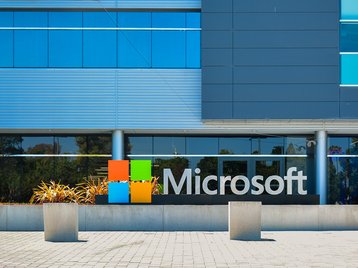April 18, 2024, /The Register/ - Microsoft is looking to significantly expand datacenter space to service expected AI demand, tripling the rate at which it adds capacity early in its next financial year. Other hyperscalers appear to be following suit.
Booming interest in foundation models and generative AI is causing a dramatic rise in demand for extra compute power, as is the interest in training ever-larger models.
According to documents seen by Insider, Microsoft is preparing to address this by doubling new build Azure capacity in the second half of this fiscal year, which runs to the end of June.
Not content with this, Microsoft is going to step up a gear and go for 3x growth in additional datacenter capacity in the first half of its fiscal 2025.
The documents also make clear that Microsoft is "securing a record number of GPUs" to handle AI workloads, and more than doubled its total installed base of the accelerators during the second half of last year.
We asked Microsoft to comment.
The megacorp had already flagged last year that it intends to spend "many billions of dollars" on building extra capacity in anticipation of a rapid uptick in customers wanting to run generative AI projects.
Earlier this year, a job ad spied by The Register for someone to source real estate for Microsoft's cloud infrastructure hinted at significant expansion plans for its datacenter footprint in the Asia Pacific region.
It isn't just Redmond that is stepping up its datacenter capacity. A new report from Synergy Research Group indicates it has taken just four years for the total capacity of facilities operated by hyperscalers to double, and it forecasts that this total capacity will double again within the next four years.
The number of datacenters operated by hyperscale providers has now passed the thousand mark for the first time, but the average capacity of new builds is also growing, we're told.
Synergy said that while it expects each year ahead to see 120-130 additional hyperscale datacenters come online, capacity growth will be driven increasingly by the larger scale of those new bit barns, with generative AI cited as the prime reason for that increase in size.
As of the end of 2023, Synergy's figures showed that the US accounted for 51 percent of global capacity, as measured by MW of critical IT load, with Europe on 17 percent and China close behind with 16 percent.
The companies with the biggest footprint are - unsurprisingly - the big three cloud providers (Amazon, Microsoft, and Google). These account for 60 percent of all hyperscale datacenter capacity, followed by Meta, Alibaba, Tencent, Apple, ByteDance, then other relatively small hyperscale operators.
Synergy chief analyst John Dinsdale said that while the number of hyperscale datacenters and their average size are on the increase, there is a lot of complexity and nuance behind the numbers.
"Generally speaking, self-owned datacenters are much bigger than leased facilities, and datacenters in the home country of a hyperscaler are much bigger than its international facilities," he said.
Although core datacenters are getting ever bigger, there is also an increasing array of smaller bit barns being deployed in order to push infrastructure closer to customers, he claimed. ®





